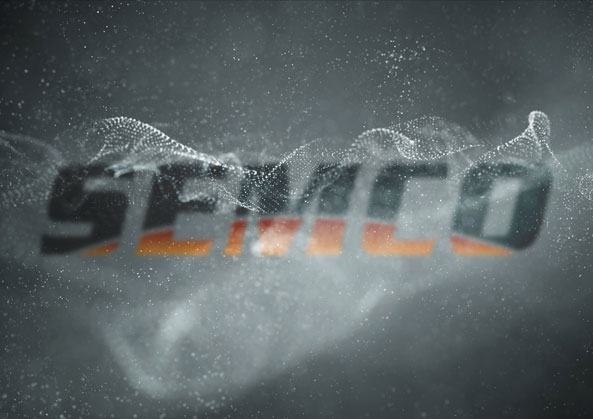
Is Graphite Toxic : How We Deal With the Dust Hazard
Is Graphite Toxic?
Dust: a finely powdered substance of various matters, often suspended in the air. When that suspended matter is floating around someone machining graphite electrodes, it’s graphite dust. Anyone that has machined graphite knows that the particles generated from the machining process are very fine and have a tendency to remain airborne, even when a dust collector is in use. Unlike common household dust, graphite dust has characteristics that must be taken into consideration.
Is There a Significant Graphite Dust Hazard?
Dealing with graphite dust naturally brings up the question, is this stuff considered a hazard to the human body? Before answering this, we should clarify that there are two types of graphite: natural and synthetic. The graphite used to fabricate parts in our operation, and thus the source of the graphite dust when we machine parts, is synthetic graphite. Like natural graphite, synthetic graphite is considered a biologically inert material and thus not hazardous. The most common isotope in graphite is carbon, which the human body does not recognize as a foreign substance and will not attempt to reject it. The human body is itself primarily carbon and is very compatible with the inert carbon material in synthetic graphite.
That said, graphite dust can create a dust hazard to a person's well being when people are exposed to a lot of it repeatedly and a quality dust collector is not used. The particles are so small that they can penetrate deep into the lungs and irritate them. Prolonged exposure to high levels of graphite dust can even cause chest pain and the lung disease pneumoconiosis. Graphite dust can also irritate the eyes and skin. It is important to seek medical advice from a healthcare professional either from your primary care office or at the nearest emergency room if symptoms arrive (always have a local emergency number posted for your medical services and local poison control center).
Considering how high levels of graphite dust can cause irritation and even sickness, we take every measure to capture graphite dust at the source. It is virtually impossible for a dust collector to remove 100% of graphite dust from the air. Some amount will surely escape into the surrounding atmosphere. Due to the minuscule size of the dust particles, these may not be visible to the human eye. We therefore test our air quality constantly, and per the EPA guidelines, the amount of particulates in the air is smaller than what you would find outdoors. We are very pleased with our graphite dust collector system which uses a battery of round filters, pre-filters, and 28 large High-Efficiency Particulate Air (HEPA) filters to constantly filter the air in the shop (8 times the shop air volume an hour.)
The Two Most Efficient Methods of Graphite Dust Collection
Aside from capturing machining dust to maintain a clean shop environment and protect employees, graphite dust collection is critical to preventing large quantities of graphite particles from entering into electrical housings. Since it is impossible to remove all the graphite dust from the air, we also employ positive pressure in all control boxes on the floor, keeping the graphite dust away from electrical boards, control panels, and switch boxes. By nature, synthetic graphite is electrically conductive and could create a myriad of problems if allowed to accumulate in areas that have a tendency to short out when in contact with foreign conductive materials.
There are two methods for mitigating the graphite dust hazard present in a graphite machining shop and preventing long term health problems or a more immediate medical emergency. The first method is to use high air velocity with a dust collector. High-speed machining centers designed for machining graphite come equipped with a dust collection system that evacuates the dust with a powerful vacuum. However, conventional machining centers such as mills, band saws, or grinders must be equipped with a type of secondary collection system. An off-the-shelf shop vacuum system is not adequate for graphite dust as these shop vacs’ filtering systems are generally not suited to collect the fine particles of graphite. To be efficient, a portable vacuum system must be equipped with a HEPA filter that satisfies certain governmental standards of efficiency. In order for a filter to be qualified as a HEPA filter by government standards, it must be capable of removing 99.97 percent of all particulate matter in excess of 0.3 microns (which is about the size of the smallest graphite particles).
The Best System for the Semco Shop: A Fixed System To Mitigate The Graphite Dust Hazard
Semco uses the best system for shops engaged in graphite machining: a fixed unit with sufficient vacuum to draw the dust from the machine, through ductwork, and into a collection bin. The recommended speed for capturing dust at the machining center is a minimum air velocity of 500 feet per minute. Once the dust enters the ductwork, there should be a minimum air velocity of 2000 feet per minute in order to prevent the dust from settling out of the air stream prior to entering the collection bin.
The result is numerous 2000 lbs bags of captured graphite dust, and a clean air environment for our employees.
Still Have Questions?
Reach out to the professionals at Semco Carbon for a deeper discussion on the safety protocols and equipment essential to staying safe when working with graphite.
